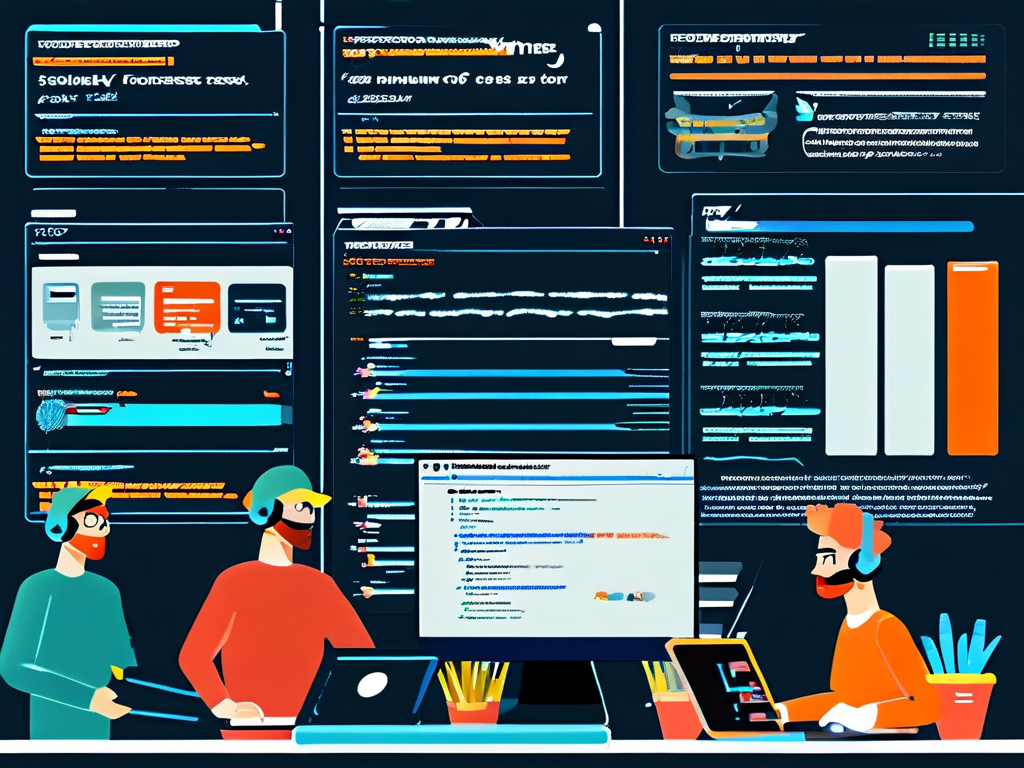Automated deployment has become a cornerstone of modern software development, enabling teams to deliver updates faster, reduce human error, and maintain consistency across environments. As organizations adopt DevOps practices, the choice between open-source and paid automated deployment tools has sparked intense debate. This article explores the strengths, limitations, and practical considerations of both approaches, helping teams make informed decisions.

The Rise of Open-Source Automated Deployment Tools
Open-source solutions like Jenkins, Ansible, and Argo CD have dominated the automation landscape for years. Their appeal lies in three key areas:
- Cost Efficiency: No licensing fees make them ideal for startups and budget-conscious teams.
- Customizability: Developers can modify code to fit unique workflows, integrating with niche tools or legacy systems.
- Community Support: Active communities provide plugins, tutorials, and troubleshooting forums.
For example, Jenkins boasts over 2,000 plugins, enabling seamless integration with cloud platforms, testing frameworks, and monitoring tools. However, open-source tools demand significant in-house expertise. Configuring Jenkins pipelines or debugging Ansible playbooks often requires dedicated DevOps engineers, which can offset cost savings for smaller teams.
The Case for Paid Automated Deployment Platforms
Commercial tools like GitLab CI/CD, CircleCI, and AWS CodePipeline offer a contrasting value proposition:
- Out-of-the-Box Functionality: Pre-built templates, intuitive GUIs, and native cloud integrations reduce setup time.
- Enterprise Support: SLA-backed assistance ensures rapid resolution of critical issues.
- Security Compliance: Features like audit logs, role-based access control (RBAC), and SOC2 certifications cater to regulated industries.
A mid-sized fintech company, for instance, might choose GitLab CI/CD for its built-in vulnerability scanning and compliance reporting, avoiding the complexity of stitching together open-source tools. Yet, subscription costs can escalate quickly—GitLab’s premium tier exceeds $99/user/month—making them less viable for resource-strapped organizations.
Hybrid Approaches and Emerging Trends
Many teams now blend open-source and paid tools. A common strategy involves using Jenkins for core deployment workflows while leveraging SaaS platforms like GitHub Actions for cloud-native tasks. This “best-of-both-worlds” model balances flexibility and scalability.
Another trend is the monetization of open-source projects. Tools like Terraform (by HashiCorp) and Kubernetes (managed services like EKS or GKE) exemplify how open-source foundations can coexist with commercial offerings. Companies contribute to community editions while selling enhanced features or managed services—a model that sustains innovation without alienating users.
Key Decision Factors for Teams
When evaluating options, consider:
- Team Size: Small teams may prioritize cost savings; enterprises often value compliance and support.
- Technical Expertise: Open-source tools require DevOps proficiency; paid platforms lower the skill barrier.
- Scalability: Cloud-native paid tools handle spikes in workload more efficiently.
- Vendor Lock-In Risk: Proprietary systems may limit future flexibility compared to open standards.
A 2023 Forrester study revealed that 62% of enterprises use a mix of open-source and commercial tools, highlighting the industry’s preference for pragmatic hybrid solutions.
The Future of Automated Deployment
As AI-driven automation gains traction, tools like GitHub Copilot and automated rollback systems are reshaping deployment workflows. Open-source projects will likely adopt AI/ML capabilities, while paid platforms may focus on predictive analytics and autonomous incident resolution.
In , the choice between open-source and paid automated deployment tools isn’t binary. Organizations must align their selection with strategic goals, technical capacity, and growth plans. By understanding the trade-offs—and embracing hybrid models when appropriate—teams can build deployment pipelines that are both robust and adaptable.









